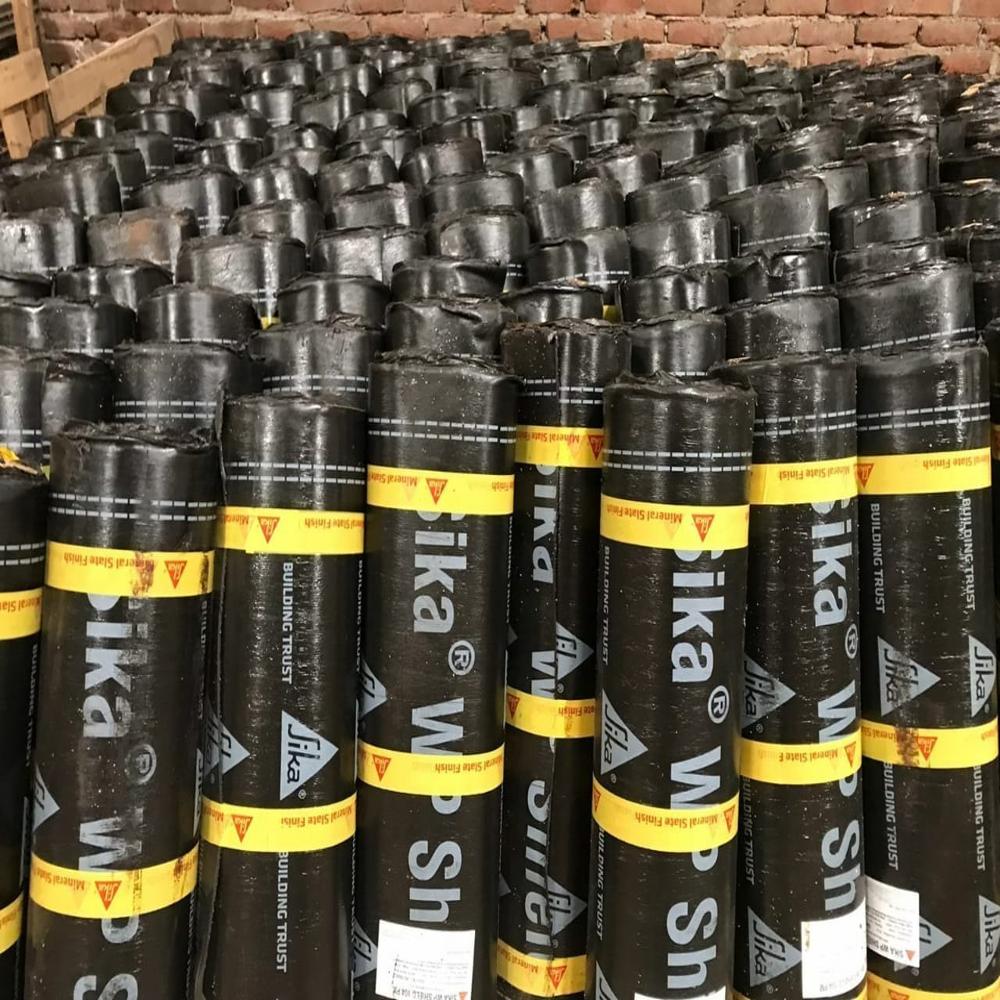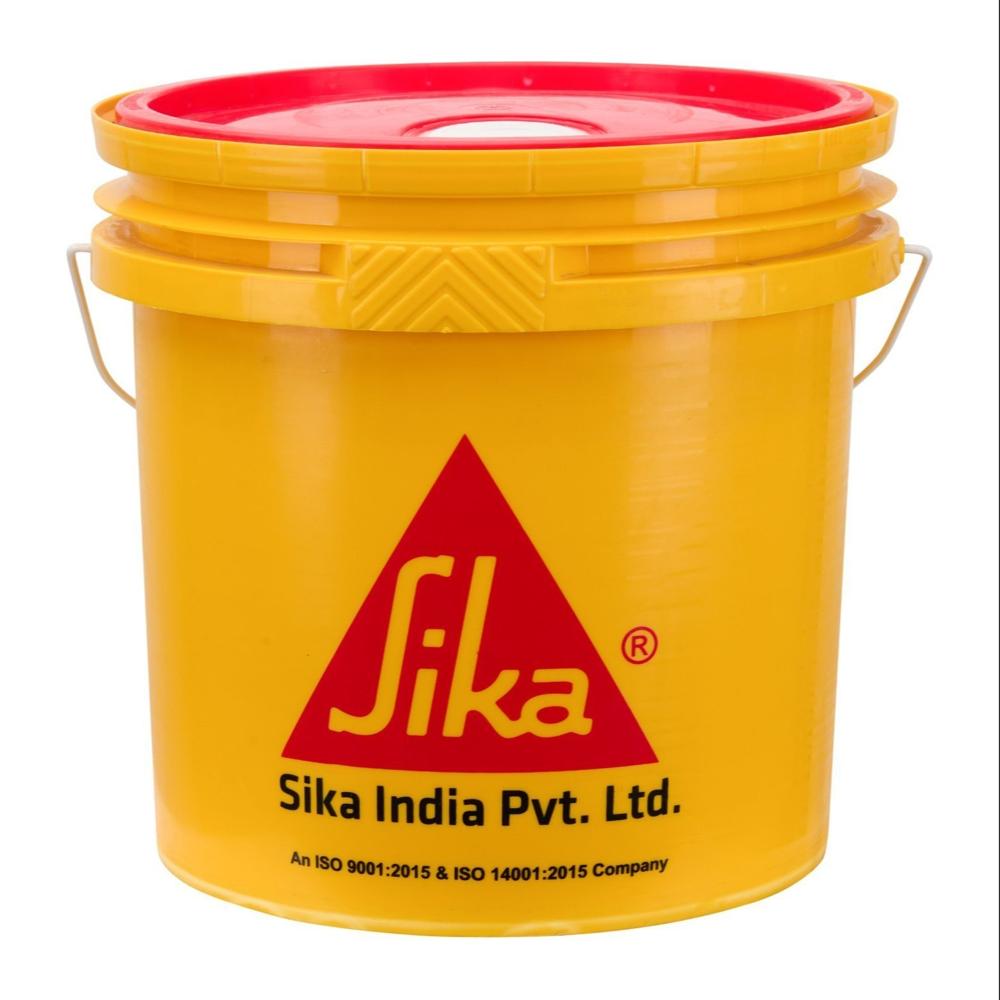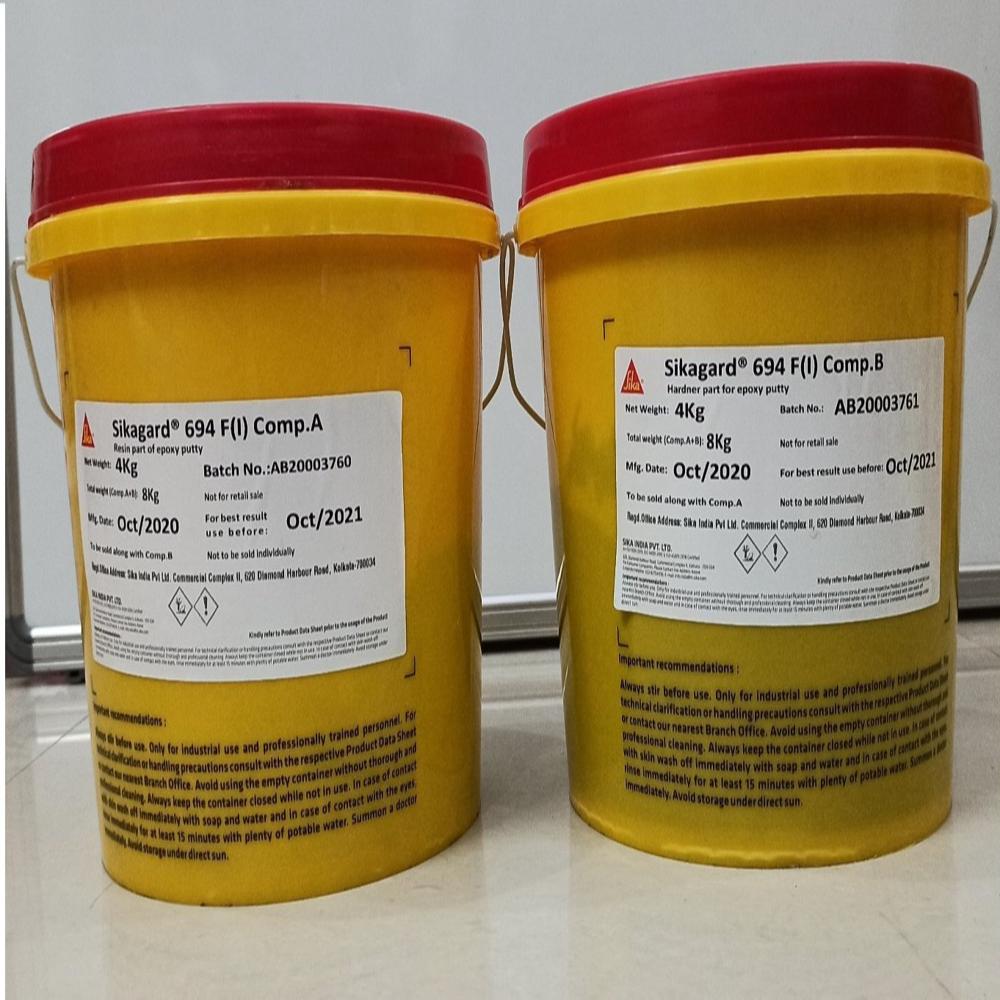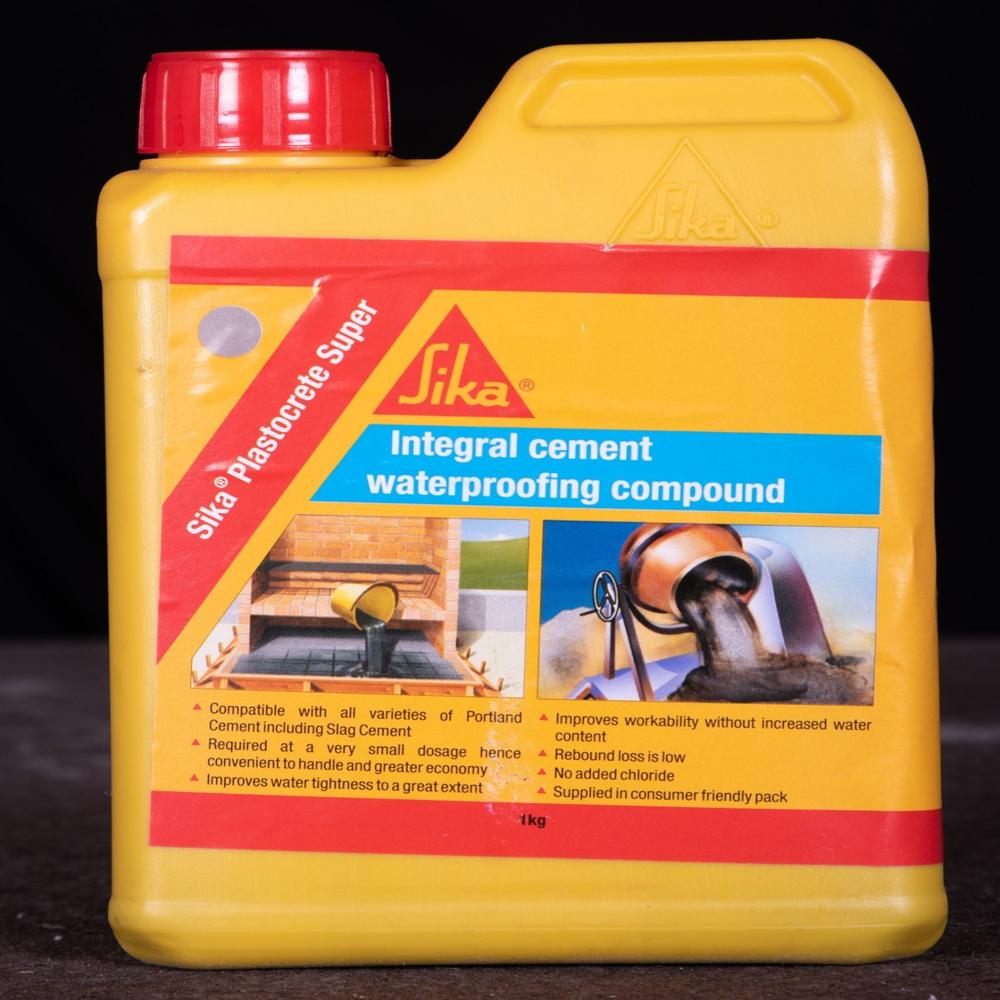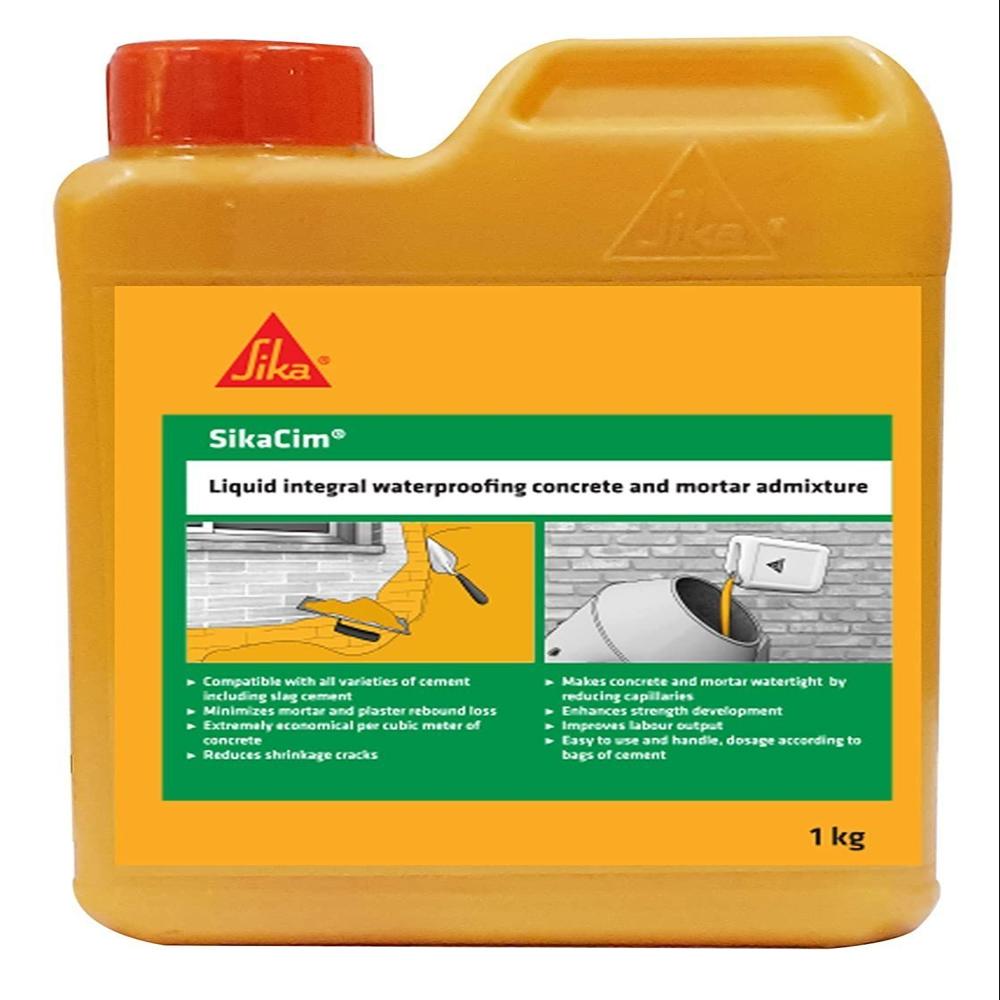SikaShield P24 PE IN 3 mm
1725.0 INR/Piece
Product Details:
- Application Flexibility at low temperature -2 C (EN 1109) Softening point 150 C (ASTM D36) Flow resistance No flow at +120 C, 2 hrs (EN 1110) Water tightness 10 kPa (Method B, 24 h) (EN 1928) APPLICATION INFORMATION Ambient air temperature +10 C min. / +40 C max. Substrate temperature +10 C min. / +40 C max. Substrate moisture content < 6 %
- Usage The product is used as a wThe product is used as a: Base sheet and/or top sheet in multi-layer systems Please note: The product is not suitable for roofs permanently exposed to UV radiation. Protect membrane with a suitable protection layer.aterproofing membrane for: Balconies and terraces under a heavy protection layer such as tiles or gra vel. Flat and sloping roofs under protective layers or ballast Car park decks Bridge decks under asphalt wearing layer Underpass and subways Basements and other below ground structures Horizontal reinforced concrete slabs, decks, podiums and protrusions Vertical reinforced concrete walls
- Purity Longitudinal (MD) (650 150) N/50mm Transversal (CMD) (450 150) N/50mm (EN 12311-1) Elongation Longitudinal (MD) (40 10) % Transversal (CMD) (40 10) % (EN 12311-1) Tear strength Longitudinal (MD) (350 100) N Transversal (CMD) (300 100) N
- Material Grade Flexibility at low temperature -2 C (EN 1109) Softening point 150 C (ASTM D36) Flow resistance No flow at +120 C, 2 hrs (EN 1110) Water tightness 10 kPa (Method B, 24 h) (EN 1928) APPLICATION INFORMATION Ambient air temperature +10 C min. / +40 C max. Substrate temperature +10 C min. / +40 C max. Substrate moisture content < 6 %
- Product Type BAG
- Main Material Chemical base Composition APP modified bitumen Reinforcing material Non-woven polyester fabric Packaging Roll width 1.0 m Roll length 10.0 m
- Surface Treatment Polished
- Click to View more
X
SikaShield P24 PE IN 3 mm Price And Quantity
- 1725.0 INR/Piece
- 1 Piece
SikaShield P24 PE IN 3 mm Product Specifications
- Polished
- 12 Kilograms (kg)
- Chemical base Composition APP modified bitumen Reinforcing material Non-woven polyester fabric Packaging Roll width 1.0 m Roll length 10.0 m
- Flexibility at low temperature -2 C (EN 1109) Softening point 150 C (ASTM D36) Flow resistance No flow at +120 C, 2 hrs (EN 1110) Water tightness 10 kPa (Method B, 24 h) (EN 1928) APPLICATION INFORMATION Ambient air temperature +10 C min. / +40 C max. Substrate temperature +10 C min. / +40 C max. Substrate moisture content < 6 %
- The product is used as a wThe product is used as a: Base sheet and/or top sheet in multi-layer systems Please note: The product is not suitable for roofs permanently exposed to UV radiation. Protect membrane with a suitable protection layer.aterproofing membrane for: Balconies and terraces under a heavy protection layer such as tiles or gra vel. Flat and sloping roofs under protective layers or ballast Car park decks Bridge decks under asphalt wearing layer Underpass and subways Basements and other below ground structures Horizontal reinforced concrete slabs, decks, podiums and protrusions Vertical reinforced concrete walls
- Flexibility at low temperature -2 C (EN 1109) Softening point 150 C (ASTM D36) Flow resistance No flow at +120 C, 2 hrs (EN 1110) Water tightness 10 kPa (Method B, 24 h) (EN 1928) APPLICATION INFORMATION Ambient air temperature +10 C min. / +40 C max. Substrate temperature +10 C min. / +40 C max. Substrate moisture content < 6 %
- Ambient air temperature +10 C min. / +40 C max. Substrate temperature +10 C min. / +40 C max. Substrate moisture content < 6 %
- Longitudinal (MD) (650 150) N/50mm Transversal (CMD) (450 150) N/50mm (EN 12311-1) Elongation Longitudinal (MD) (40 10) % Transversal (CMD) (40 10) % (EN 12311-1) Tear strength Longitudinal (MD) (350 100) N Transversal (CMD) (300 100) N
- BAG
SikaShield P24 PE IN 3 mm Trade Information
- KOLKATA
- Cash in Advance (CID)
- 20 Piece Per Day
- 2 Days
- Within a certain price range free samples are available
- Roll
- East India Bihar Jharkhand Odisha West Bengal
- 10 kPa (Method B, 24 h)
Product Description
DESCRIPTION SikaShield P24 PE IN 3 mm is an APP modified bituminous waterproofing membrane with a thickness of 3 mm. It is reinforced with a non-woven polyester fabric and is flexible at -2 C. The top surface is coated with polyethylene foil, which ensures the bond of the overlying layer. The underside of the product has a burn-off film for easy torch-application. USES The product is used as a waterproofing membrane for: Balconies and terraces under a heavy protection layer such as tiles or gra vel. Flat and sloping roofs under protective layers or ballast Car park decks Bridge decks under asphalt wearing layer Underpass and subways Basements and other below ground structures Horizontal reinforced concrete slabs, decks, podiums and protrusions Vertical reinforced concrete walls The product is used as a: Base sheet and/or top sheet in multi-layer systems Please note: The product is not suitable for roofs permanently exposed to UV radiation. Protect membrane with a suitable protection layer. CHARACTERISTICS / ADVANTAGES Fully bonded Long term flexibility Excellent water tightness Very good mechanical properties (tensile, tear, shear) Can be handled in warmer temperatures easily Low water absorption Easy to install by torching method Capable of withstanding thermal and structural stresses Good durability and performance under long term ageing PRODUCT INFORMATION Chemical base Composition APP modified bitumen Reinforcing material Non-woven polyester fabric Packaging Roll width 1.0 m Roll length 10.0 m (EN 1848-1) Shelf life 12 months from date of production Storage conditions The product must be stored in original unopened and undamaged packaging in dry conditions and temperatures between +5 C and +35 C. Store in a vertical position. Do not stack pallets of the rolls on top of each other, or under pallets of any other materials during transport or storage. Appearance / Colour Top surface Polyethylene film / Black Bottom surface Polyethylene film / Black Thickness 3 mm (+0.3 mm / -0.2 mm) (EN 1849-1) TECHNICAL INFORMATION Tensile strength Longitudinal (MD) (650 150) N/50mm Transversal (CMD) (450 150) N/50mm (EN 12311-1) Elongation Longitudinal (MD) (40 10) % Transversal (CMD) (40 10) % (EN 12311-1) Tear strength Longitudinal (MD) (350 100) N Transversal (CMD) (300 100) N (ASTM D5147) Flexibility at low temperature -2 C (EN 1109) Softening point 150 C (ASTM D36) Flow resistance No flow at +120 C, 2 hrs (EN 1110) Water tightness 10 kPa (Method B, 24 h) (EN 1928) APPLICATION INFORMATION Ambient air temperature +10 C min. / +40 C max. Substrate temperature +10 C min. / +40 C max. Substrate moisture content < 6 % BASIS OF PRODUCT DATA All technical data stated in this Product Data Sheet are based on laboratory tests. Actual measured data may vary due to circumstances beyond our control. FURTHER DOCUMENTS Guidelines and good practice for torch-applied membranes Method Statement - Bituminous Membranes for Roofing Build-up Method Statement - Bituminous membranes for below ground ECOLOGY, HEALTH AND SAFETY User must read the most recent corresponding Safety Data Sheets (SDS) before using any products. The SDS provides information and advice on the safe handling, storage and disposal of chemical products and contains physical, ecological, toxicological and other safety-related data. APPLICATION INSTRUCTIONS Strictly follow installation procedures as defined in method statements, application manuals and working instructions which must always be adjusted to the actual site conditions. SUBSTRATE QUALITY SYSTEM DESIGN Consider the following when designing the waterproofing system: The supporting structure must be of sufficient structural strength to support all new and existing layers of the roof and basement build-up. The membrane system for underground works must be considered for protection before structural concrete works. The complete roof system must be designed to withstand and be secured against wind uplift loadings. The wind uplift resistance of the adhered roofing assembly is limited by the adhesion strength of the product to the substrate. SUBSTRATE CONDITION The substrate surface must be uniform, firm, smooth and free of any sharp protrusion or burrs, clean, dry, free of grease, laitance, oil, dust and looseTell us about your requirement

Price:
Quantity
Select Unit
- 50
- 100
- 200
- 250
- 500
- 1000+
Additional detail
Mobile number
Email

